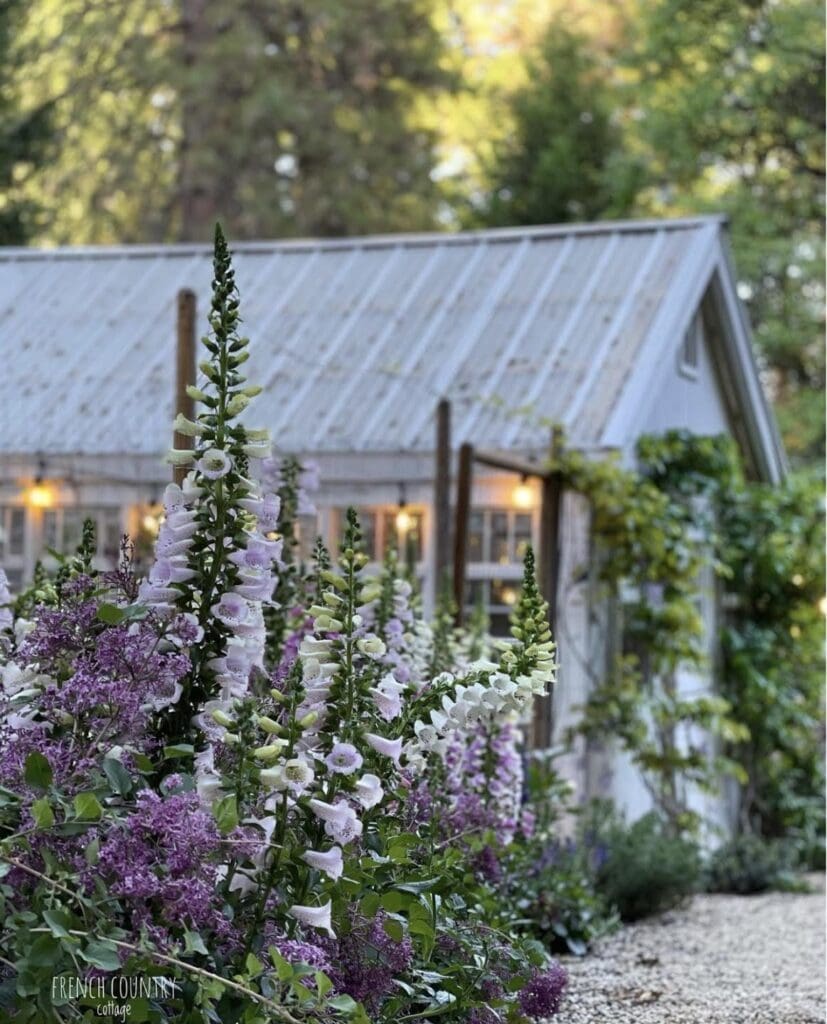
Every time I share any photos of the garden – I get a ton of questions about foxgloves. How to grow them. Where to plant them. What types are they. Are they poisonous and how do you plant them to get them so full. And more. Though I have written before about Foxgloves- I thought I would answer some of those new questions along with the original post.
We added several new foxgloves to the garden this past week- and the next morning, we were surprised to see a couple of them wilting. We thought they maybe got shocked a bit or something like that- but when we checked- we found that the plant tops were completely off of the roots. Something had eaten the plant at the base and killed it. Which is pretty surprising actually- because foxgloves are known to be resistant plants- meaning animals won’t eat them. I will do a post next week sharing more about what happened, what we decided to do to try to protect the other plants and what else we found at the hardware store to try if you are having a similar issue with gophers or moles.
About Foxgloves
Digitalis purpurea, which is what the common foxglove is named is native to Europe. The flowers are tubular, speckled (sometimes clear) and they bloom in shades of purple, rose, pink, apricot, yellow, white or sometimes bi-color as well. They grow well from seeds and will bloom for two to three months starting in late spring. They are biennial plants, which means foxgloves take two years to fully flower. And they are happy re-seeding plants-just let them dry and drop seeds in the garden – or a tip I heard recently was to cut the stalks and just lay them down in the garden and they will re-seed on their own that way too.
Foxgloves in our Garden
We have planted several types of foxgloves in our garden. I am pretty much obsessed with almost all of them- but my favorite colors are whites, purples and peach. And so, those are the ones I load up on the most. While we found a huge amount of purples this year- we also lucked out with some white varieties and a couple ‘rose’ which is a darker pink color.
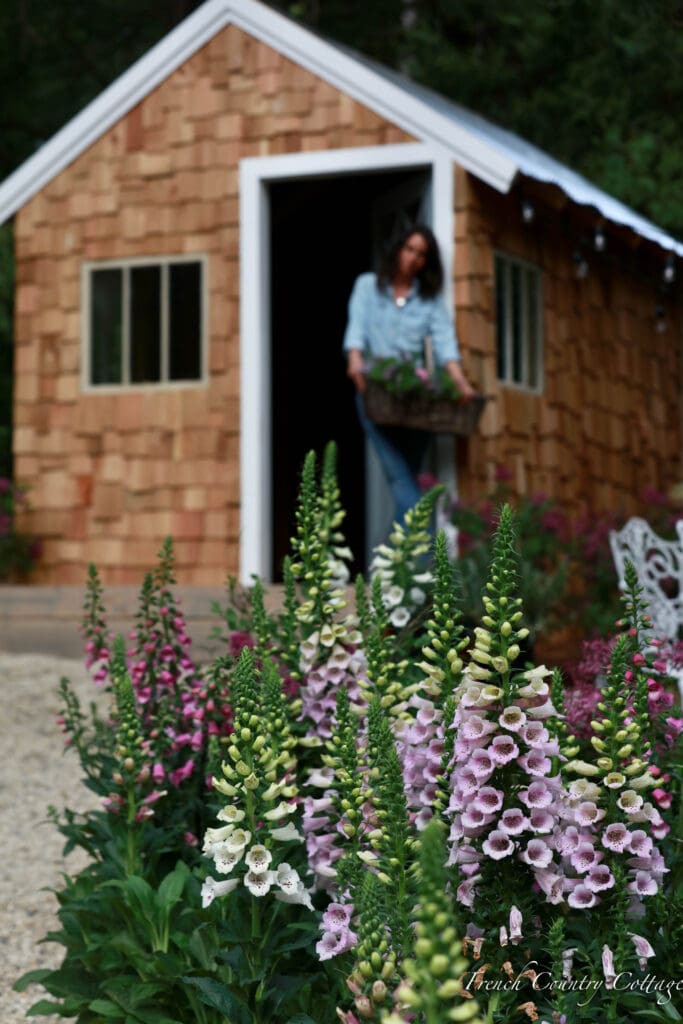
A favorite which we haven’t seen this year is peach. Peach Dalmatian or Apricot Beauty are gorgeous blushing peach colors. We have some planted from previous years but not in this area of the garden (yet!).
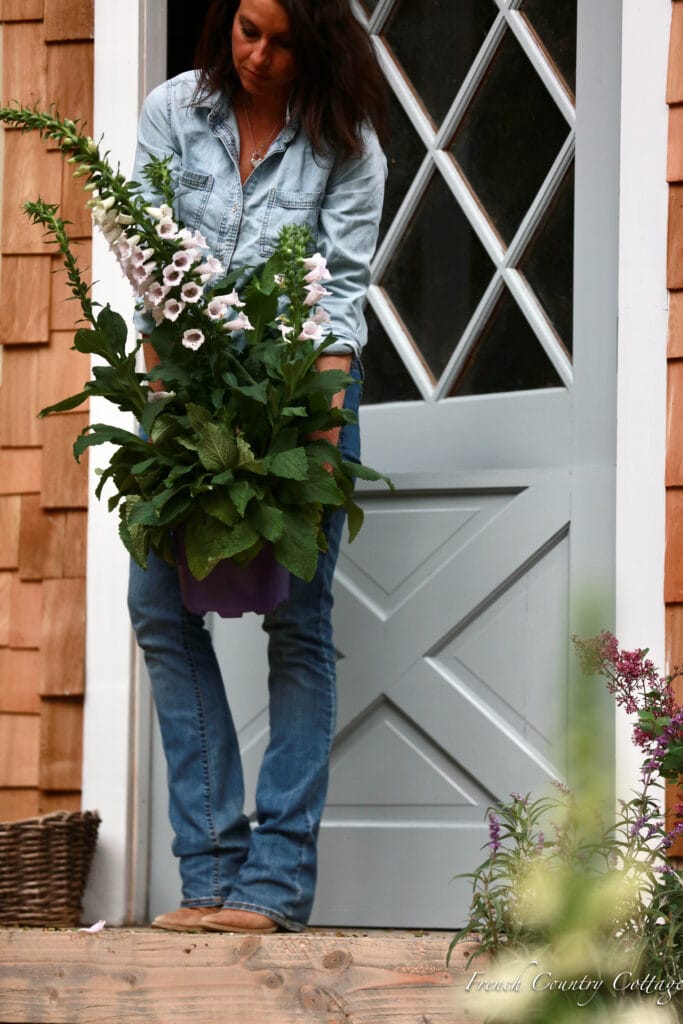
Pale Lavender
Some of the purples we found were a creamy pale purple color I believe it is called Camelot Lavender. In the sunset light- they appear to blush a bit – which is so pretty.
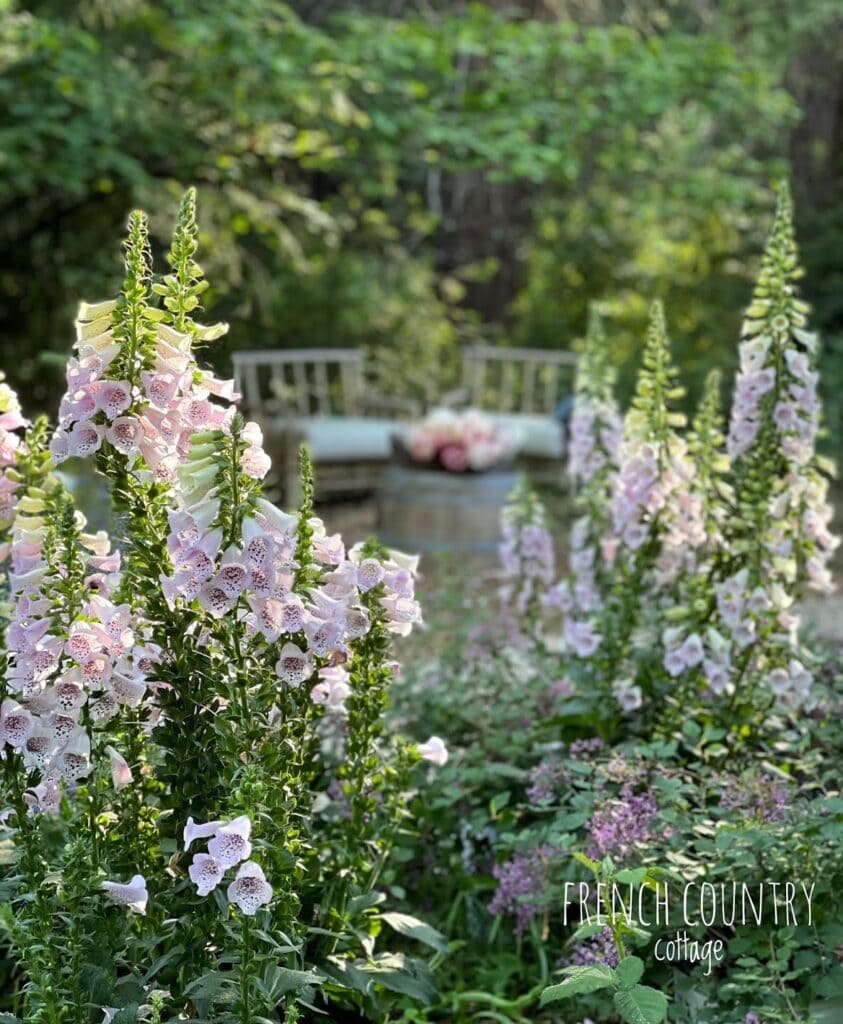
Dalmatian Purple
You can see the Dalmatian Purple mixed in this are as well- they are the more bold pink color and are the smaller foxgloves here. As you might have noticed- not all foxgloves are as big and tall as others.
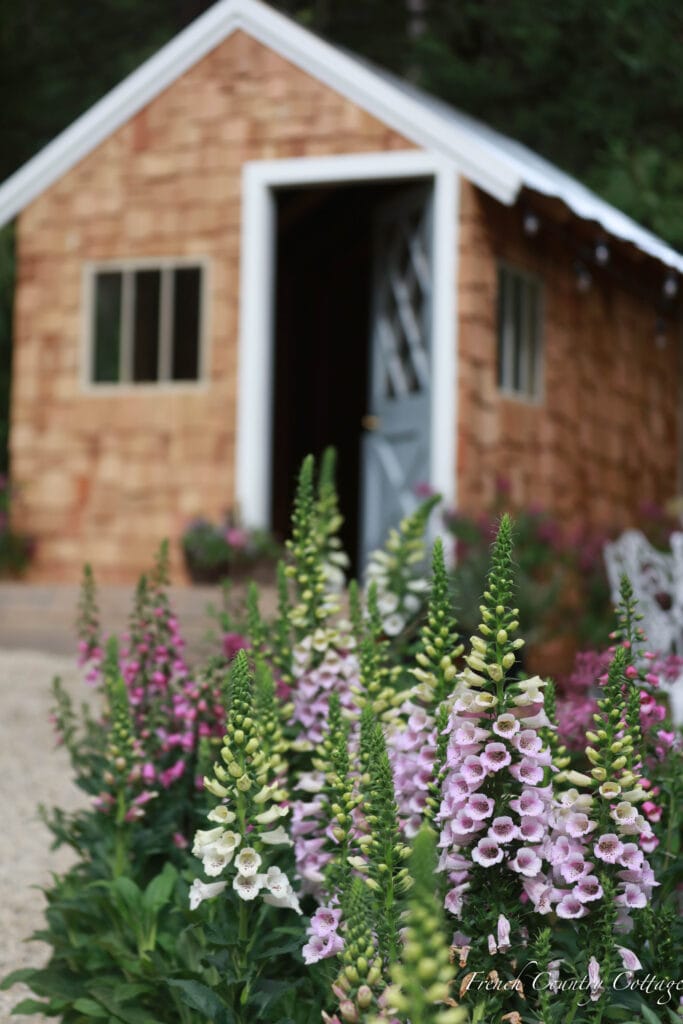
White Foxgloves
We have several varieties of shades of White foxgloves as well. We did find a couple this year for the new area- as I mentioned – but we also have some that grew back from previous plantings. Something to note with foxgloves- the ‘spots’ on the inside can be dark or light- so depending on if you like the ‘speckled’ look- you can choose your foxglove type accordingly.
This is Dalmatian White- with the speckles.
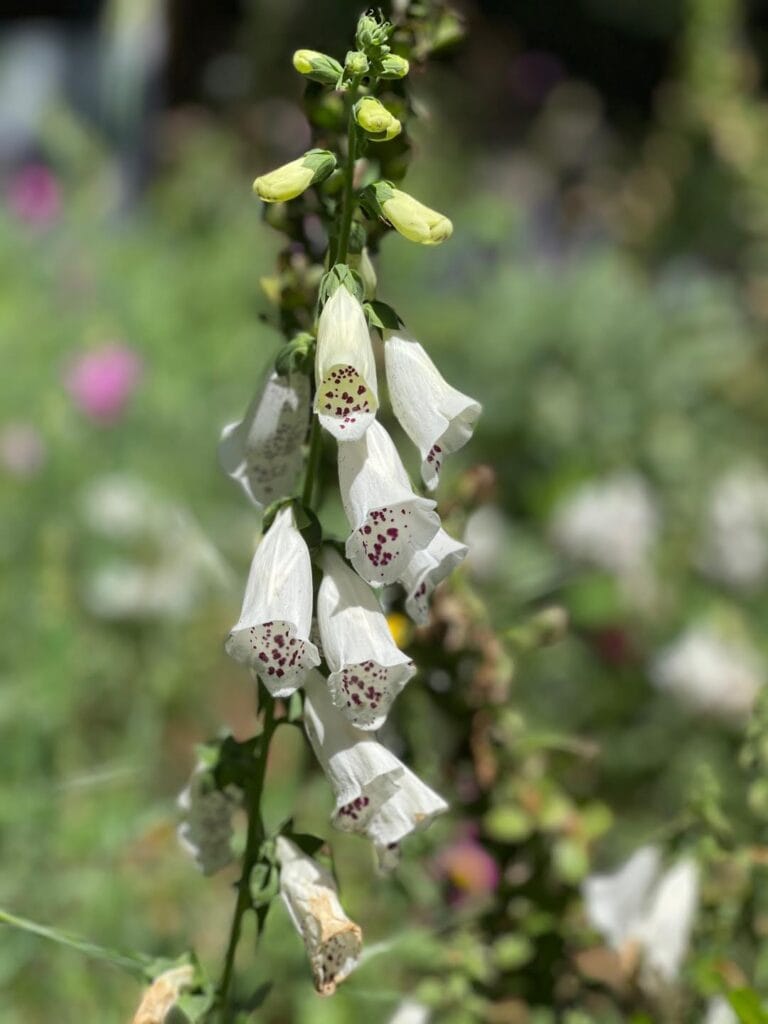
And Camelot White- with lighter speckles.
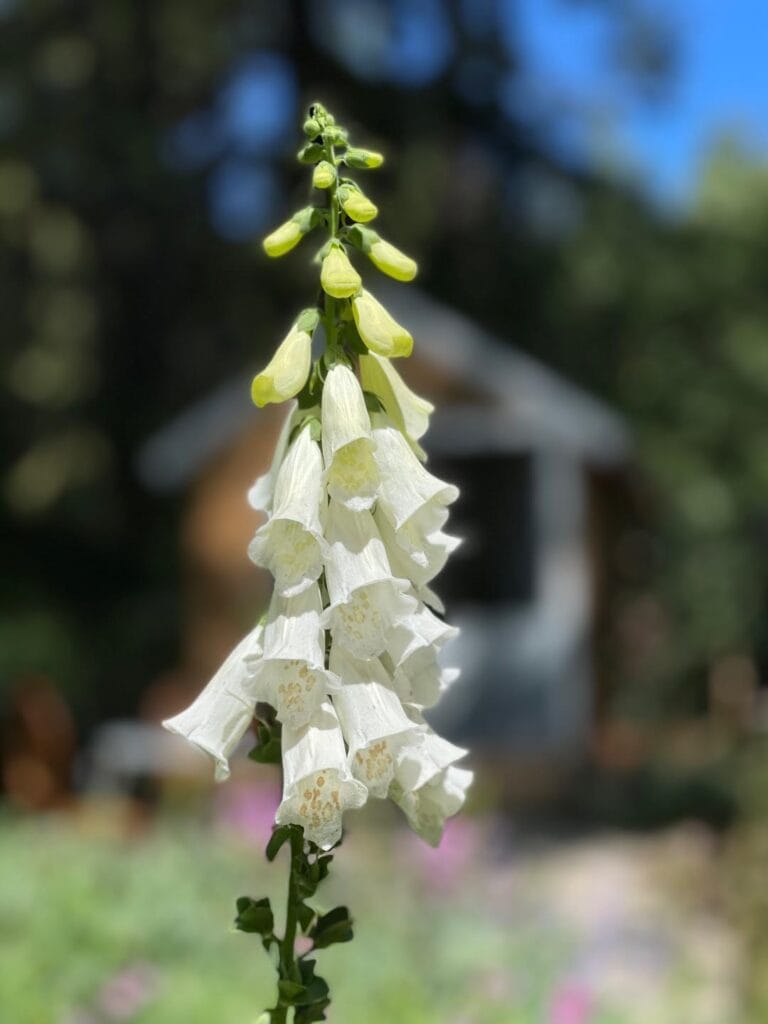
They also have a more pure white Foxglove called Snow Thimble.
Rose Foxgloves
We also have a few Rose colored foxgloves. To be honest, these are ones that have grown back from several years ago so not sure just what variety they are but I think Dalmation Rose.
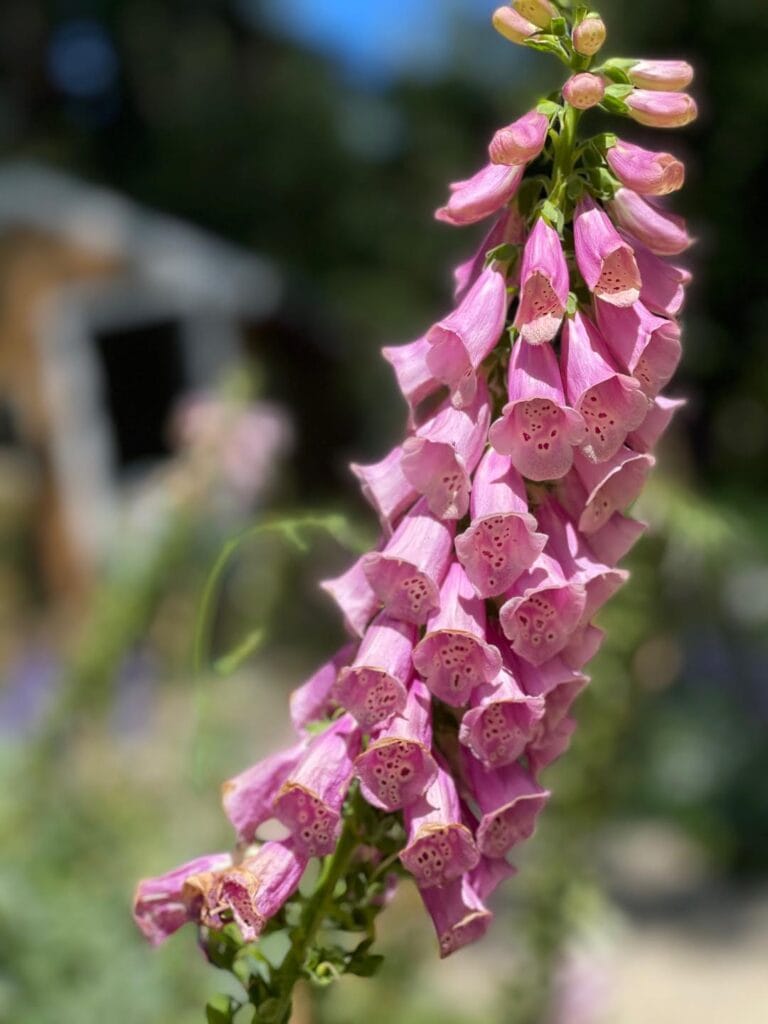
Foxgloves, People & Pets
A common question- are foxgloves poisonous? Yes they are. You don’t want to eat them of course, but some also say to also use caution when handling them. A few important tips:
Plant them away from edible garden plantings- Aka – Don’t include them in your veggie garden- their leaves look like edible leaves but are Not.
Don’t let your curious pets nibble on them – be safe and don’t leave them unattended with them. Most animals know that something is toxic and will leave it alone- hence the plants that are labeled as ‘deer resistant’ – which foxglove is. But since you don’t know how your pets will be – or if they are more curious than others- be careful to be safe.
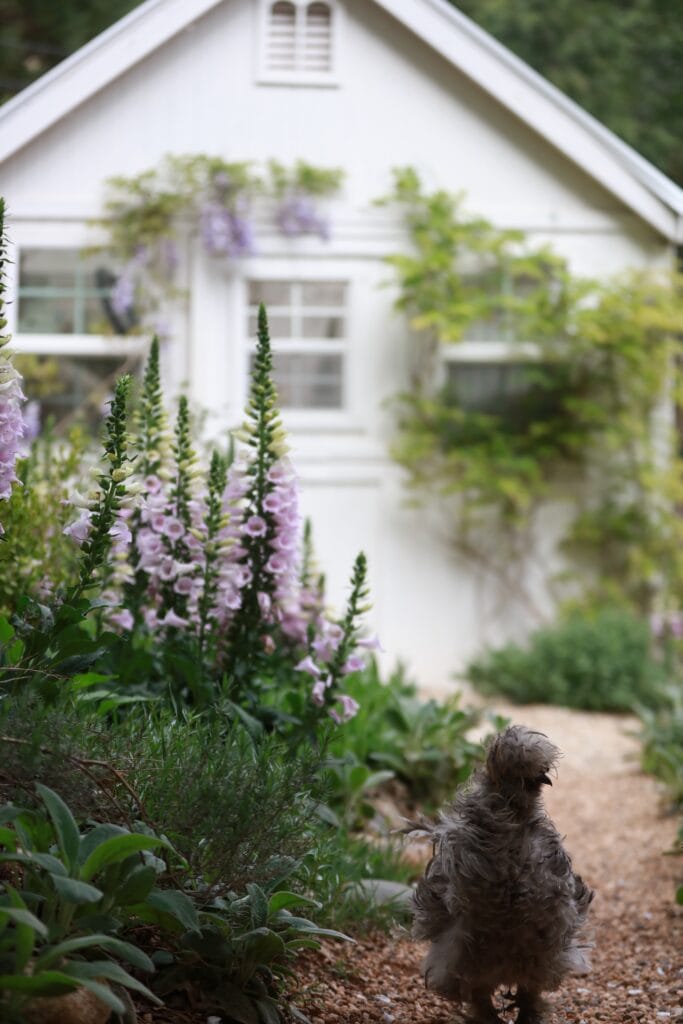
Our chickens, goats and even Sweet Pea wander down this garden path lined with foxgloves. But- we don’t let them wander here alone, we don’t leave them unattended and we don’t let them climb through the garden beds. On that same note- we have not had a problem with any animals eating or even going near them in the 20 or so years we have had foxgloves- even before we knew that they were poisonous. Until this past week with the moles or gophers eating the roots- which is very strange.
Side note- They also make medicine with foxgloves. Foxglove are used to make a prescription called digoxin. But of course- don’t try that at home on your own folks!
Where to Plant Foxgloves
We have ours in a morning sun/afternoon shade area. We do have some that have popped up in full sun- but the hot California sun can be a bit much for them so they aren’t in the best spot.
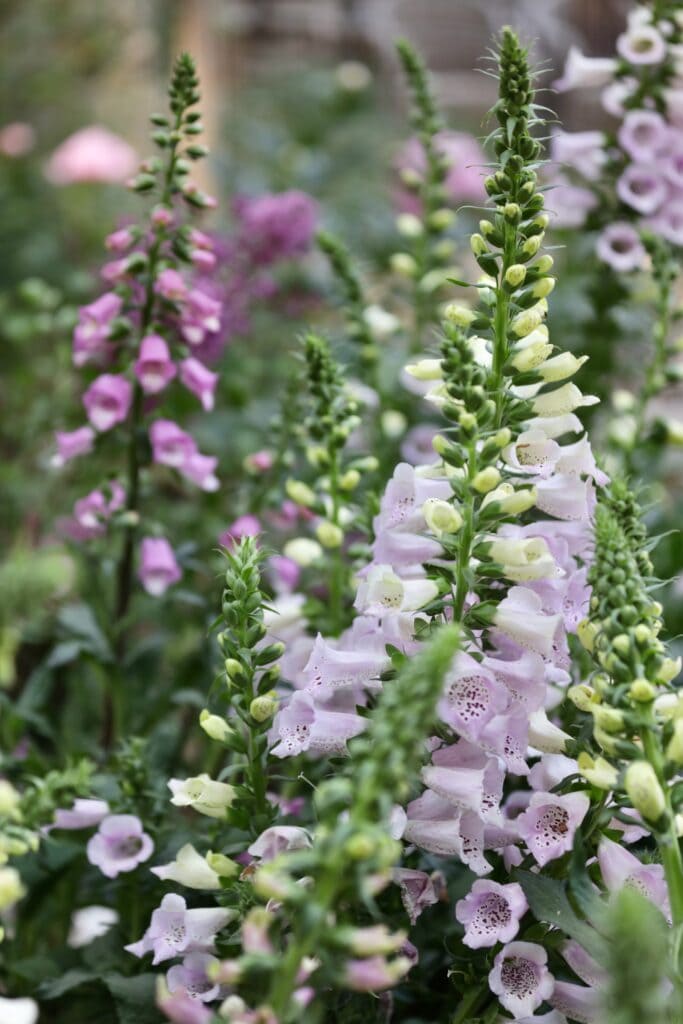
We also have had them in containers- like whiskey barrels and zinc pots.
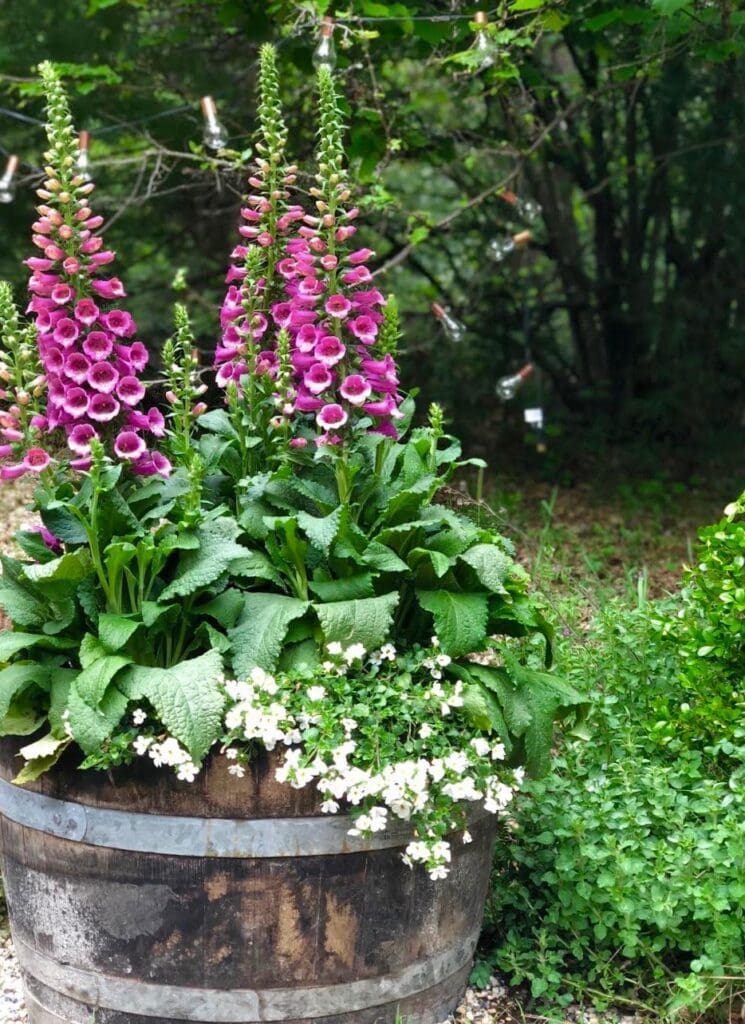
How to plant for fullness
I kind of covered that a bit in a recent post – but basically, the method to my madness is plant them all. haha. Okay- not really. But kind of. 🙂 Something you may not have noticed about our garden areas are that I am big on a lot of the same. Meaning- I don’t want 37 types of plants in this garden area- I want a lot of what I love. So, I plant a lot of foxgloves to get that look. Layer them in zig zag type formations and in abundance for a similar look. And remember to plant them two years in a row -because they don’t bloom each year. I look at it as an excuse to add a few more each spring. 🙂
Want more?
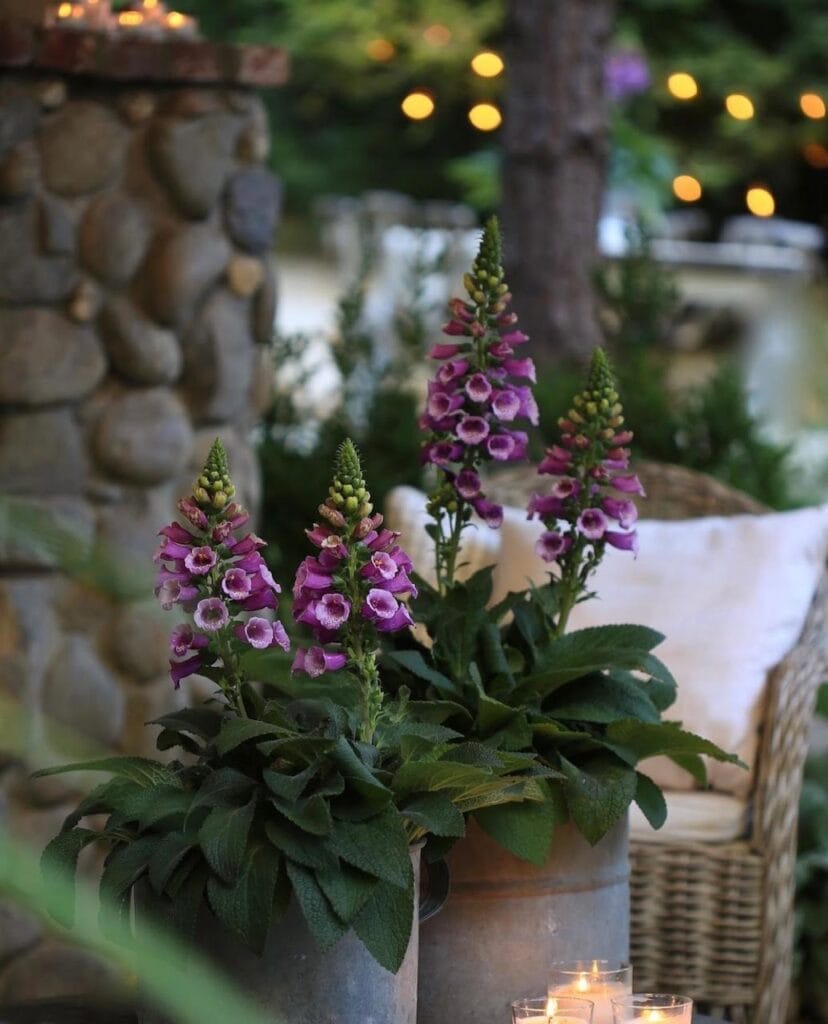
Click on over to the original blog post I wrote- 8 things to know about Foxgloves for even more info.
I hope this additional information helps. Stay tuned for more on the moles/gophers and garden debacle.
Happy Gardening all.
Hi Courtney! I was going to search for your last Foxglove post this evening for my REFERENCE. Like magic, you sent this. 😅 So helpful and Thank you!! XO
Glad it helps! So many people have messaged asking for more information – thought the post deserved an update!
I’m loving the foxgloves!!! I’ve tried to grow them by seed, but haven’t been successful. I see you have some in a purchased container so i will try out some local greenhouses to see if they have any. always Enjoy your blogs!!!!!
Yes! We have found most of these new ones this year at Home Depot and local nurseries.
I love foxglove but while they are beautiful for the first bloom I find the second go around consists of weak stemmed small-flowers. What am I doing wrong?
Karen
I aDore their freckleS. I like to point the FRECKLES OUT to childrEn and they get a kick out of thEm. I do find Foxglove a bit fussy and its hard to wait two seasons for their blooms but once they start actively reSeEding, they are glorious. I also love lupine and hoLlyhocks en masse. Your garden is lovely!
I love foxglove too, and yet never planted them. Thanks for sharing your knowledge! I am going to try them this year!
The rose colored foxglove you mention is most probably DIGITALIS MERTONENSIS. IT IS a short-lived PERENNIal. I always allow my Digitalis to seed. I adore foxglove. Do bear it MInd, it is poisonous.
Hi Courtney,
I love foxgloves too! Thank you for all the useful information. I will be doubling up too 🙂
I found this interesting
I love uour posts! We live in Venice Beach, California, when is the best month to plsnt foxgloves? Do you reco planting bulbs too? Ive never seen seeds, just bulbs we only seem to fet ine season of bloom ftom ours.
Thanks So much gor the interesting INFORMATION on FOXGLOVE! Ive had a difficult time find them in my area of UPSTATE NEW York for dime reas on. Hoping its not too late to get some. Yours are so beautiful. Thanks for the inspiration !
~ Stephanie
LOVE THIS INFO ABOUT FOXGLOVES! WE’VE ONLY EVER HAD THE “VOLUNTEERS” THAT SPRING UP IN OUR GARDEN EVERY YEAR BUT THEY ARE NOT AS PRETTY AS THE ROSE AND PEACH ONES THAT YOU HAVE SO I MAY HAVE TO SEEK THEM OUT.
ALSO ADORE GARDEN ROSES SO I’M EXCITED FOR YOUR NEXT BLOG POST!
ALWAYS ENJOY YOUR POSTS AND GORGEOUS PHOTOS!
Is it possible to plant in a Container for the patio and have good results? Would love to Take them when moving.
Thank you for sharing your info and your BEAUTIFUL FOXGLOVE 🌱
Thank you for this very helpful info. I love foxgloves but have only tried growing them once. I will try again! Have you had the most success with Potted plants or seeds?
I planted a couple of dozen Foxglove for our first grandbabies garden baby shower planned in five weeks. Two days of 100-degree temps played havoc with several plants, and I noticed a handful had keeled over and fainted. I am anxious to hear about your discovery and how you plan to resolve it? I was thrilled not to have to plant in baskets as Foxglove are “normally” gopher-resistant, and the moles only burrow around roots “normally,” not eating the roots. Standing by.
The purple, returning foxlove is called digitalis X Mertonensis. It is the “Perrenial”FORM. I say perennial but my EXPERIENCE with them has been as a HALF-HARDY annual. It is a tetraploid hybrid.
Hmmm. We live up the road from you in ashland, Oregon (Southern Oregon) and I thought I found the best plants to foil all the deer in our area (we live in the city…four blocks off main street). Well, guess what? Deer will eat the foxglove here….i caught them. ugh. i found another plant for a sunny area that ‘our’ deer won’t touch…wallflower or erysimum. comes in lavender, orange, yellow, mauve. it must be a semi-perennial like foxglove since it grows in quite a large mound for 3-4 years and then it dies out.